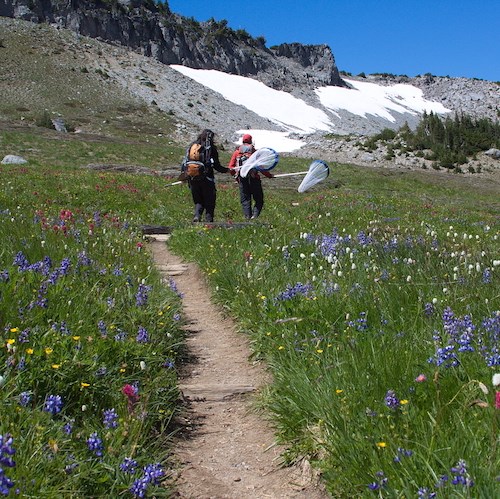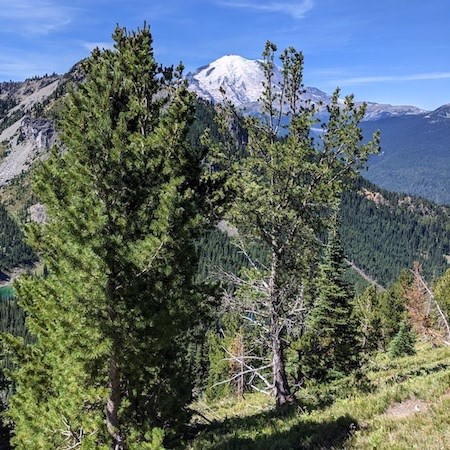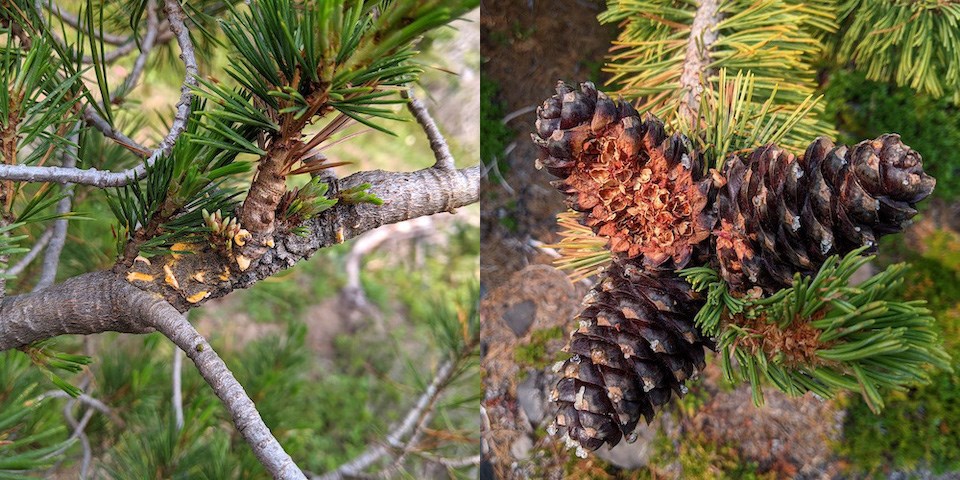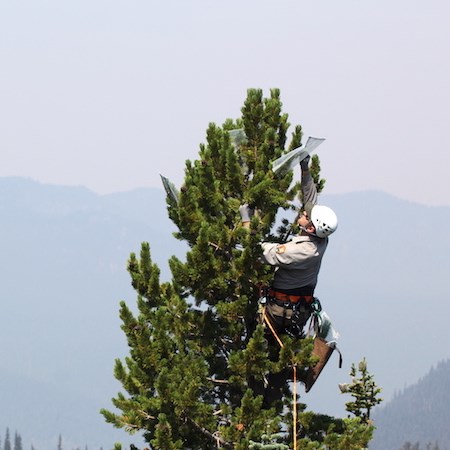|
Climate change creates ripple effects throughout the environment of Mount Rainier and the Pacific Northwest. Park scientists are studying the effects of climate change in a variety of areas in the park. 
NPS/S. Redman Photo Wildflower MeadowsThe blooming of Mount Rainier's gorgeous wildflower meadows is inextricably tied to the amount of snow on the ground. When snow melts earlier, flowers bloom earlier. “Peak bloom”, when a large variety of wildflowers bloom simultaneously, could disappear in a future with earlier snow melt. Researchers have already seen shifts in timing so that meadow species that didn't bloom together now do. This could have significant effects on pollinators and the ability for young plants to grow, but it also means that we may be moving toward a time in which the 20-species-blooming-at-once-in-Paradise pictures are no longer possible. MeadoWatch: Citizens Tracking Climate ChangeYou can contribute to research at the University of Washington by sharing your wildflower photos. Each of your pictures is an "observation" of when and where wildflowers bloom. These data can help uncover how climate change affects the timing of the seasons. All you need to do is take photos of wildflowers (close enough to identify the species) from anywhere in Mount Rainier National Park! Make sure your photos are date-stamped and geo-tagged (most smartphones automatically enable this feature), and visit the MeadoWatch website for instructions on how to contribute your photos to the project. You will be helping build a long-term data set used to understand the impacts of climate change in Mount Rainier National Park. 
NPS Photo Cascades Butterfly Project: Monitoring Subalpine Butterflies as Climate ChangesButterflies and plants are sensitive indicators of climate change because air temperature influences their life cycles and distribution. Temperatures also affect the pace and timing of wildflower blooming, which butterflies depend on for food and shelter. The Cascades Butterfly Project involved scientists and volunteers from North Cascades National Park Service Complex, Mount Rainier National Park, Mount Baker-Snoqualmie National Forest, and Okanogan-Wenatchee National Forest. Meadow RestorationChanges in melt timing make the meadow plants more vulnerable to trampling and can affect how well our young plants survive. Each meadow species responds differently (not all meadow plants are the same). Meadow restoration is the work we do in the park to fix our own mistakes: filling in trampled areas with native plants to bring meadows back to their natural state (and deciding what that natural state was!). Different restoration techniques are being studied to see what will work best in our current climate. You can play a big role in preserving meadows by staying on trails! 
NPS Photo Whitebark PineWhitebark pine is a long-lived tree species who can live as large trees in the Sunrise Area and stunted krummholz trees in the alpine regions of the park. Whitebark pines grow where many other species cannot. But they grow slowly, and as their habitat warms and snow melts earlier, other tree species can start to outcompete them. Whitebark pine is a proposed threatened tree species under the Endangered Species Act that has experienced over 60% mortality at Mount Rainier National Park due to an introduced fungus, white pine blister rust. The effects of the rust infection seem to be worse in warmer conditions. 
NPS Photos Whitebark pine is a high elevation species important to subalpine and alpine communities. Their seeds are a food source for wildlife, especially the Clark's nutcracker, a bird that breaks open the hard pine cones and caches the seeds away for future snacking. Whitebark pine is a masting species, meaning most individual trees produce their cones only every few years and all at once. 2021 was masting year at Mount Rainier and throughout the northwest. It takes two years for the cones to develop, so the seeds and cones developing in 2021 were actually fertilized in 2020 and overwintered on the trees. 
NPS Photo Mount Rainier National Park, in partnership with the US Forest Service’s Forest Health Protection Division, collected seeds from Mount Rainier trees in summer 2021 for restoration and screening for fungal resistance. However, the developing cones must be caged to stop nutcrackers from breaking them all open and eating the seeds. In the Sunrise, Hidden Lake, and Summerland areas of the park, rectangular wire cages were used to cover cones on some of the whitebark pine branches. Lots of cones were left for nutcrackers and squirrels and the cages don't harm the trees. Once collected, some of the seeds were sent away to a US Forest Service lab so that they could be screened for genetic resistance to the white pine blister rust, important knowledge for conservation and planning for future restoration. Other cones, like those collected at Sunrise, will be used for restoration because many of the largest cone bearing trees there are already known to be very resistant to rust and are good source trees for seeds. Mount Rainier Climate Change: |
Last updated: October 22, 2024
